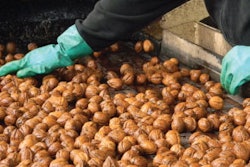Food companies take heed. The familiar adage, “What’s in a name?” never before has applied more squarely to you.
With the advent of social media and other tools that ease the ability of consumers and consumer advocates to communicate, it is more important than ever for food companies to pay attention to the information they convey to the public regarding their food products, ingredient sources and manufacturing processes. For the hesitant, unaware or out-of-touch food company, the failure to meaningfully assess the information it conveys — or chooses not to convey — may have a substantial, and potentially devastating, effect on the company’s business.
The recent controversy over so-called “pink slime” provides a cautionary lesson for food companies operating in the information age. Facts regarding the safe nature of a food product may not resonate in the perception of governmental, corporate and individual consumers where consumer advocates, the media or consumers themselves choose to spread misinformation and dub an otherwise safe food product unsafe or unappetizing. In short, the viral uproar regarding “pink slime” demonstrates the need for food companies to be proactive and purposeful in assessing what information they choose to convey regarding their products.
“Lean, finely textured beef” (LFTB) — pejoratively dubbed “pink slime” — is a lean meat product that beef processors recover from fat trimmings left over from other cuts of beef. The processors warm the trimmings and spin them in a centrifuge to remove the fat. The meat recovered from this process is ground, treated with a puff of ammonia hydroxide gas to kill bacteria such as E. coli and salmonella and compressed into blocks for use in ground beef.
Both the U.S. Department of Agriculture (USDA) and the Food and Drug Administration (FDA) deem LFTB safe. Further, they have determined that there is no need for beef processors or retailers to list LFTB or ammonia hydroxide on product labeling because LFTB is 100-percent beef and the use of ammonia hydroxide gas to render LFTB safe is a process, not an ingredient. The government has noted that LFTB is not the only product to benefit from ammonia hydroxide. According to the USDA, ammonia hydroxide also is used in a variety of other processed foods, such as baked good, gelatins, puddings and cheeses, and can occur naturally in foods.
A mere four years ago, the Washington Post touted the production of LFTB, noting that ammonia hydroxide is used to render LFTB safe and indicating that frozen LFTB is used in approximately three-quarters of the hamburger patties sold in the United States. Further, the Washington Post reported that “some of the beef industry’s harshest critics … are self-described fans” of the use of ammonium hydroxide to render LFTB safe.
Moreover, it has been widely reported that the production of LFTB saves resources. Absent the vast use of LFTB in ground beef products, approximately 1.5 million additional cattle, and the attendant consummation of resources, would be needed to fill the void.
In the view of government regulators and beef producers, LFTB is as safe as, and perhaps safer than, other forms of beef. Until the “pink slime” scare, the food industry, and apparently consumers who were aware of LFTB and its use, believed as much. For years, in an effort to improve the nutritional quality of the ground beef served but still reduce costs, members of the food chain, including retailers, restaurants and school districts, routinely purchased ground beef products containing LFTB.
Despite LFTB’s reported benefits, the fickle winds of perception nevertheless recently reversed, practically overnight. Food activists opposed to LFTB and its manufacturing process are disseminating misinformation about “pink slime” in the guise of food safety. As a result, consumer misconception about “pink slime” has spread with firestorm speed through the media, both traditional and social.
It appears that the proverbial cow is out of the barn and may not be returned. Reports indicate that most public and private institutional consumers, and numerous individual consumers, now refuse to purchase ground beef containing LFTB even though millions of pounds LFTB have been consumed over the years without incident or complaint. The results have been devastating for producers of LFTB. At least one manufacturer of LFTB has filed for bankruptcy, and another has closed several plants, each citing the impact of the LFTB backlash.
For food companies, one important lesson learned from this controversy is that they should think more from a marketing perspective about whether to disclose early on the details about certain food processing techniques and the foods produced thereby. At the very least, any such assessment should include careful weighing of the risks and benefits of withholding information about food products and manufacturing processes that consumers might consider distasteful or harmful, even where regulating authorities have ruled that the techniques and products are safe and that there is no obligation to disclose that information to the public.
The “pink slime” controversy also raises the specter of a cautionary lesson for consumers, namely to be careful for what you wish. Aside from the loss of jobs, the slaughter of additional cattle and the use of vast resources, the controversy might end up diluting food safety efforts at beef processing companies. Some companies that are unable to produce profitable products or that suddenly lose a significant profit source because of misinformation or misconceptions regarding otherwise safe techniques and products may no longer have the resources to support all of the important steps they otherwise would take to ensure that adequate safety mechanisms are in place. Other companies may seek to cut corners. The potential impact of the “pink slime” controversy on food safety is ironic. If LFTB no longer is available, beef containing bacteria may find its way back into ground beef products.
John T. Shapiro is a partner and a member of the Food Industry Team at the Chicago law firm of Freeborn & Peters LLP. He concentrates his practice on litigation and business counseling for food companies. Reach him at 312-360-6389 or [email protected].























